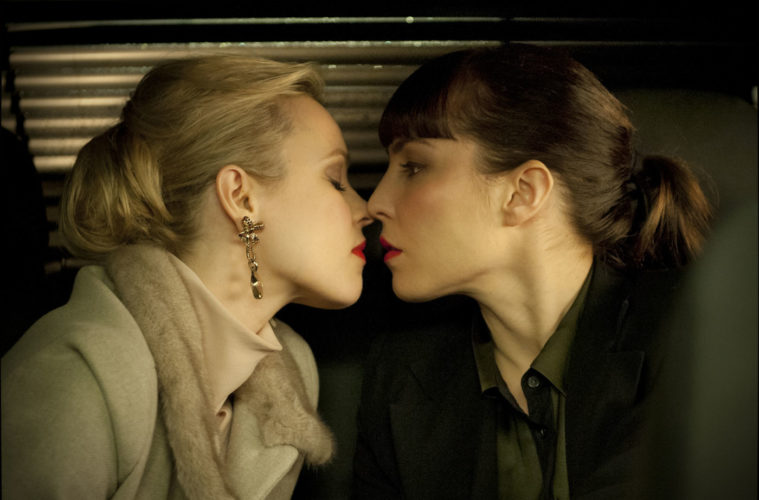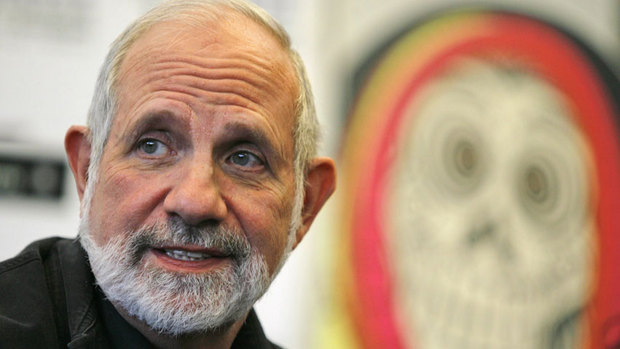Looking back, the first decade of the 21st century was an unusually disparate time for ’70s movie brats. While Steven Spielberg remained a box office titan, several films produced in the 2000s were becoming darker and, seemingly, less commercial even as they bore many traits of his earlier entertainments. (Massive box office intake included.) Martin Scorsese utilized the luxuries of his profile to a somewhat opposing effect: although passion projects such as Gangs of New York and The Aviator would rightly be considered “grown-up” pictures, both those and a looser, more immediately appealing entry, The Departed, deviated from the seething darkness that had so defined much of his earlier oeuvre; even Bringing Out the Dead, released only in 1999, would be a shock had it opened less than ten years later. Too much could be said about George Lucas to fit in one place, the man at once wildly independent and massively, all-consumingly corporate, to questionable artistic (if not technological) lengths. Francis Ford Coppola made wine and released one greatly underseen, greatly underappreciated film.
And, then, there was Brian De Palma. The less commercial, far more lurid brother in arms of the noted New Hollywood figures fared most poorly of all during the era — Coppola, for as inactive as he may have been, at least produced a number of projects; several weren’t even made by his children! — releasing a string of financial and critical failures deemed by many the clear sign of a once-gifted mimic in decline. While it’d be uncharacteristic to allege that such opinions are “wrong” — chalk that up to the ever-malleable nature of an individual man or woman’s reaction to art, etc. — it’s nevertheless difficult to see such treatment bestowed upon a series of movies that, though (in most cases) far from perfect, can be counted as among some of the most significant films he’s ever made by virtue of their largely uncompromising place in a greater canon.
With the theatrical release of his new film, Passion, right around the corner, we’ve decided to look at his post-2000s output — an era significant for how it shows De Palma taking some (hopefully not all) final gasps with the studio system before, in a strangely full-circle career arc, resorting to independent means.
Mission to Mars (2000)
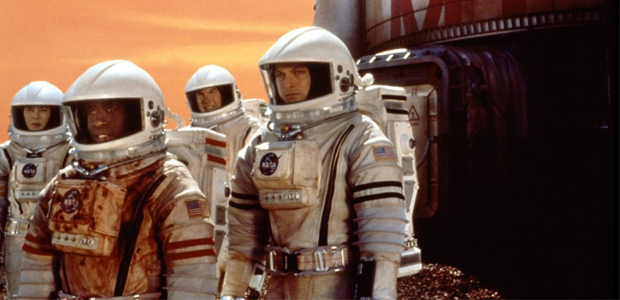
The film introduces itself quickly and slyly: a cloud-strewn blue sky offers the space for a propelled rocket, promptly before bursting into multiple pieces that rain down on a group of cheering kids. It’s not a disaster, but the illusion of one played out on an claustrophobically small, aesthetically superficial scale. It’s also how Brian De Palma keys us into Mission to Mars, one of the 21st century’s first tentpole releases and, still to this date, among the more willingly off-putting.
Clearly disinterested in the spectacle that audiences crave so strongly in their Disney blockbusters, De Palma, unraveling a slow-burn space mystery, reveals himself to be more deeply concerned with the technology that could’ve allowed such a film to be made in the first place. What can we do with these new tools? Why should they even be used? Mars is strangely woozy for a modern film concerning space exploration, all the more uncharacteristic in its elegant long takes and genuine stabs at character work — Tim Robbins’ death scene could very well be the most affecting found in any De Palma picture — but, sadly, the hypnotic pace can be dislodged by somewhat perfunctory elaborate CG displays. No matter how impressive its sand monster attack may be in concept and execution — and, I think, for the fact that he ever directed a sand monster attack — “showstopper cinema” doesn’t feel to be of a piece with what De Palma intends to make.
Its own grisly outcome would’ve fit so many times prior — the content itself, not a monster made out of Mars pebbles; forgive me for seeming too fascinated with its existence — but this doesn’t entirely work when Mission to Mars is one of the very, very few of his movies we can say has a happy ending. And, yet, while De Palma can feel a bit lost in this terrain — some effects, more often than not those employed to “simpler” degree, still hold up respectably; others are jarringly of their time — it’s fun to see the man, already decades into a career, go where he never had (and, likely, never will) go again.
Femme Fatale (2002)
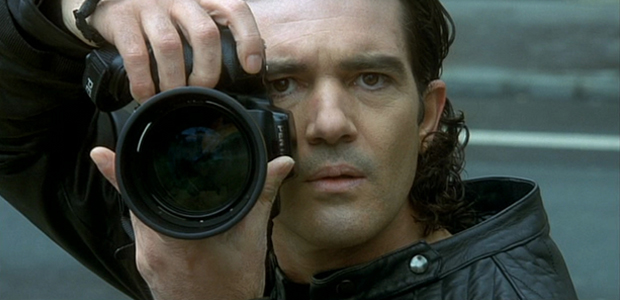
As much a Rosetta Stone to the De Palma canon as Raising Cain or Body Double, this 2002 thriller is all the more remarkable for, somehow, being the most accessible title listed herein. Femme Fatale is not merely a step back from the esoteric genre trappings of Mission to Mars — nor just a dial back from the seething anger of the two pictures which would follow — but a deliriously fun dive into narrative by way of character manipulation: its opening image shows a television broadcasting Double Indemnity, a tip of the hat that, in addition to bestowing as much necessary credit to Billy Wilder as Brian De Palma, informs the conceit-driven narrative more succinctly than any method most filmmakers could ever dream of.
Following a career-best, Cannes-set heist sequence, the picture quickly spins a dream narrative for which, upon release, it had been chided, Fatale‘s harshest critics claiming a sloppy, confusing logic was all the director had up his sleeve. It’s an altogether odd complaint when one gives the picture some time to sink in: ever the visual filmmaker, De Palma returned to Raising Cain’s wink-at-the-camera motif of clocks, here — along with water, the second immediately recognizable patch of a larger fabric — a delineation of frozen time and scrambled thought. It’s a bit obvious, yes, but more effectively clean than nearly any dream mechanics one might conjure.
Said climax is, no less, another uplifting final note for its helmer, as the Rebecca Romijn character finally discovers agency, mining personal wisdom in ways that the woman on the TV could never managed. By casting off a hunky photographer (Antonio Banderas) as if we had not, in fact, spent more than an hour in his company, Femme Fatale‘s hero is given the new lease on life so many of De Palma’s sirens were never lucky enough to see. Beautiful.
The Black Dahlia (2006)
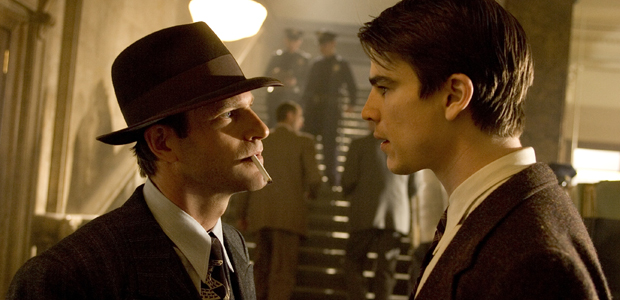
Perverting both the verisimilitude of a seemingly more “dedicated” period piece and the expectedly “theatrical” noir shades of yesteryear, The Black Dahlia opts for a pitch-black nightmare world always edging on a total descent into hell. The adaptation of James Ellroy’s novel cuts down a sprawling, elegant mystery into an intentionally convoluted two-hour thriller — contrary to what many will allege, the movie, like it or not, is supposed to function this way — where the question of guilt and innocence is impossible to pin down. It’s a film so hostile, so ugly, so alternately immediate or distant in its labyrinth plotting, so flat-out goddamn weird that you can understand why it had been cast aside like some failed endeavor by a group of bumbling fools.
But the picture isn’t, really, and it’s a shame most reached that conclusion without peeking behind the corrosion to see what’s really going on. Outside De Palma’s own canon, the obvious point of comparison would be Ellroy’s most successful screen adaptation, L.A. Confidential, whose own titular city The Black Dahlia gallantly plays as a nightmare incarnation of: all surfaces and environments bring with them an immediately facile quality, De Palma even preferring his actors a little stiff and mechanical to match the physical design — or, one thinks he must, considering the dead weight behind scenes featuring Josh Hartnett and Scarlett Johansson, a pair of golden-lit stars who barely feel like real people as they spout off dead ends about a mystery that slips further and further away with each passing scene. (Even the smaller, seemingly non-descript implementation of De Palma’s voice over a recreated audition featuring Elizabeth Short is a brutal establishment of the power plays between those in front of and behind the camera. This, curiously, would reappear in his next film.)
More immediately recognizable directorial touches yield little entertainment value — what was the last big-budget, studio-released film to render slow-motion a sickening, unwanted chance to stay in a rotten environment for just a few seconds longer? — no matter how many shades of its auteur they may contain. The final ten minutes’ plunge into a cartoon nightmare may be one of these garish affectations or a terrible misstep — for what it’s worth, this exchange remains strangely consistent with the preceding action, creating a collapse from which no one or no thing can ever recover.
Redacted (2007)
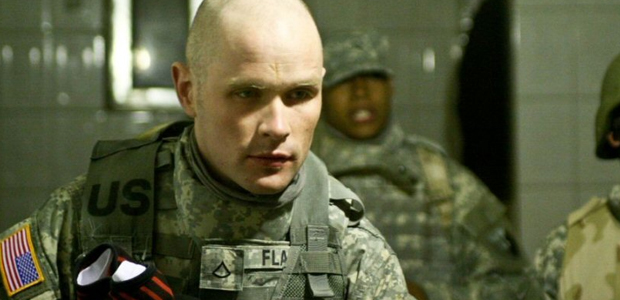
Although we can argue back and forth about its potential status as the most experimental entry in De Palma’s oeuvre, it is, without question, the most controversial. Thanks to a series of reactionary backlash — strangely in tune with what’s followed the man since his early days, as addressed here — a heap of chiding had missed the point entirely, but, just as many film critics had always failed to acknowledge dimensions of homage and visual storytelling, why expect the talking airheads on Fox News to understand authorial intent or auteurist grace notes? In electing to rest itself upon one of the more vile stories to emerge from this last decade’s distended War on Terror, Redacted had forced itself into an unfortunate corner of public perception from which there was little chance of emergence, such a problem in no way aided by the presence of amateur actors and horrid visualization.
A smidge stilted and overly showy though these performers may be, their less-than-believable screen presences carry a De Palma tradition, here amplified several degrees by the simple (albeit affecting) concept of “acting for the camera” — something of a logical end point for what was semi-recently seen in the imagined noir worlds of Femme Fatale and The Black Dahlia. If only the execution of all else was a little more resonant: De Palma’s aping of multiple aesthetics — from the stuffy, Barry Lyndon-inspired French documentary to a YouTube video, both (and multiple others) scattered between the central use of handheld “war diaries” — will often struggle to consistently cohere to some truly meaningful degree, showing a first instance of the director’s struggle with new technology.
As much having been said, the impact of their detrimental qualities speaks strongly to the immediacy of Redacted‘s most shocking expressions; over time, what clearly doesn’t work seems to fade in the memory as other moments take mental resides. And, with its horridly unflinching characteristics taken into account, the film’s depiction of a young girl’s rape (as well as the subsequent murder of her family) is, for better or for worse, De Palma’s most purely expressed fascination with confrontational images, all of which finds a new degree of “auteurist credence” as a nearly direct modern analogue to the infamous “Be Black, Baby” centerpiece of Hi, Mom! It’s to his credit as a storyteller that the fallout would be nearly as difficult to stomach, complete with a grisly closing photo montage that, as a final note, is all too fitting for the helmer: there can never be the forgiveness, justice, or guilt of merely one.
Passion (2013)

It’s De Palma to the extreme: cameras are constantly roving, investigating a room like a hungry detective; comedy, tragedy, and terror oscillate between one another faster than we’d ever be able to comprehend; a character’s kinky interests are expected, barely requiring explanation; but for as fun as all this may be, Passion has a more significant position as the most “21st-century” picture to De Palma’s name. Though remaining slavishly faithful to the tics which came to define so much of his own cinema for so long, the filmmaker makes a massive extension into the world of digital images and digital economy.
Had this not been the remake of a 2010 feature, much of its more shocking action would give the unmistakable impression of a screenplay written simultaneously with Femme Fatale. But it, excitingly, is more modern: waves of technological advancement which defined the decade between either film drives Passion, all while (even) allowing De Palma to fully integrate the digitally recorded implications of Redacted with voyeuristic staples that stretch back to his ‘60s pictures. (Greetings and the aforementioned Hi, Mom! are especially pertinent.)
As we fall into an extended dream sequence, theatrically orchestrated corporate politics become the stuff of opera (speaking somewhat literally) as yet another De Palma film breaks apart at its very seams, every last detail turning more muddled in the overwhelming shadow of canted angles and split screens as its protagonist shifts from one juncture of reality and desire into the next with so little as the brief closing of her own eyes. If Femme Fatale built to a climax by passing through the tropes of noir, Passion reaches its end point after steeping us in the paranoia-backed culture where someone or something is always watching, embedding your physical action into a permanent record — none too far from our own world, really. An end title card, like that seen in The Black Dahlia, eschews closure entirely, opting instead to forever seal its protagonist in hell.
Passion is now on VOD and hits theaters on Friday, August 30th.
What 21st century De Palma film do you most admire? Which are you planning to reassess?

